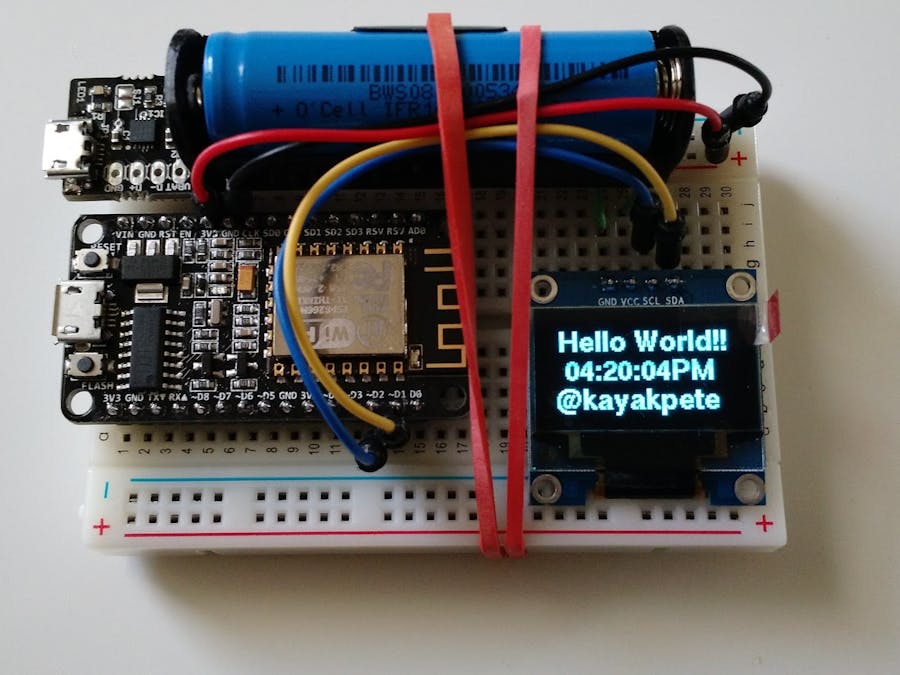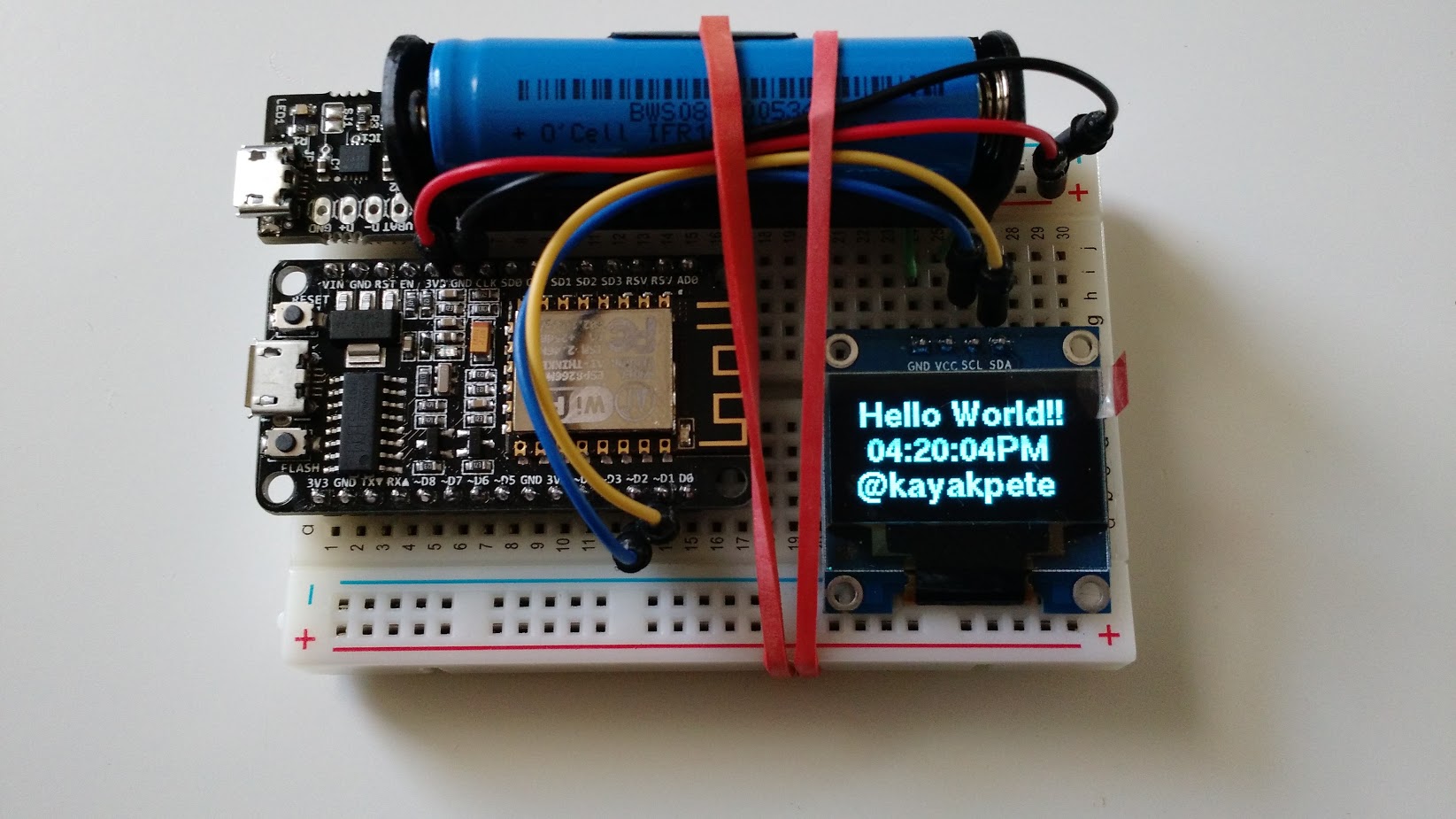-- Clock 1 - OLED Display clock
-- March, 2016
-- @kayakpete | pete@hoffswell.com
-- Hardware:
-- ESP-12E Devkit
-- 4 pin I2C OLED 128x64 Display Module
-- Connections:
-- ESP -- OLED
-- 3v3 -- VCC
-- GND -- GND
-- D1 -- SDA
-- D2 -- SCL
-- This program gets time from the Internet, and displays it on the OLED.
-- Variables
time=nil
sda = 1 -- SDA Pin
scl = 2 -- SCL Pin
timezone = "EST"
str1=" Hello World!!"
str2=" @kayakpete"
ssid="yourssid"
ssid_password="ssidpassword"
s=0
m=0
h=0
function gettime() -- Get Time by connecting to timeapi.org
time=nil
conn=net.createConnection(net.TCP, 0)
conn:on("connection",function(conn, payload)
conn:send("GET /"..timezone.."/now "..
"HTTP/1.1\r\n"..
"Host: www.timeapi.org\r\n"..
"Accept: */*\r\n"..
"User-Agent: Mozilla/4.0 (compatible; esp8266 Lua;)"..
"\r\n\r\n")
end)
conn:on("receive", function(conn, payload)
for line in string.gmatch(payload.."\n", "([^\n]*)\n") do -- Just get last line of html
datetime = line
end;
--print('DateTime: '..datetime)
time = string.sub(datetime,string.find(datetime,"T")+1,string.find(datetime,"T")+8)
conn:close()
end)
conn:connect(80,'www.timeapi.org')
return(time)
end
function wait_for_time()
if time == nil then
print("Waiting for time...")
else
tmr.stop(2)
print("Time Set! "..time)
h = tonumber(string.sub(time,1,2))
m = tonumber(string.sub(time,4,5))
s = tonumber(string.sub(time,7,8))
end
end
function init_OLED(sda,scl) --Set up the u8glib lib
sla = 0x3C
i2c.setup(0, sda, scl, i2c.SLOW)
disp = u8g.ssd1306_128x64_i2c(sla)
disp:setFont(u8g.font_6x10)
disp:setFontRefHeightExtendedText()
disp:setDefaultForegroundColor()
disp:setFontPosTop()
--disp:setRot180() -- Rotate Display if needed
end
function write_OLED() -- Write Display
disp:firstPage()
repeat
--disp:drawFrame(2,2,126,62)
disp:drawStr(5, 10, str1)
disp:drawStr(35, 30, string.format("%02d:%02d:%02d",hd,m,s)..meridies)
disp:drawStr(5, 50, str2)
--disp:drawCircle(18, 47, 14)
until disp:nextPage() == false
end
-- Main Program
wifi.setmode(wifi.STATION)
wifi.sta.config(ssid,ssid_password)
wifi.sta.connect()
tmr.delay(1000000) -- wait 1,000,000 us = 1 second
print(wifi.sta.status())
print(wifi.sta.getip())
init_OLED(sda,scl)
time=gettime() -- Set clock to time server
tmr.alarm(2, 1000, 1, wait_for_time)
tmr.alarm(0, 1000, 1, function() -- Every second increment clock and display
s = s+1
if s==60 then
s=0
m=m + 1
end
if m==60 then
m=0
h=h + 1
time=gettime() -- sync time every hour
tmr.alarm(2, 1000, 1, wait_for_time)
end
if h==24 then
h=12
end
hd = h
meridies="AM"
if hd > 12 then
hd = hd - 12
meridies="PM"
end
--print(string.format("%02d:%02d:%02d",h,m,s))
write_OLED()
end)











Comments